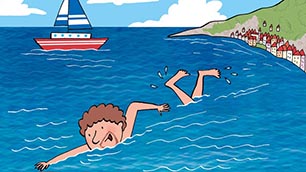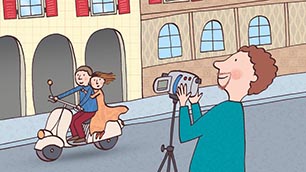I. Italian Verbs in the Third Conjugation
In the previous two Acts, we have seen verbs in the first two conjugations, -are and -ere. Now we will look at verbs in the third conjugation, which end in -ire.
To form the indicativo presente of these verbs, you drop the infinitive ending -ire and add the appropriately conjugated ending to the stem.
In the indicativo presente, -ire verbs fall into two groups.
- Verbs which require -isc- to be inserted between the stem and the conjugated ending, except in the first and second person plural. These verbs make up the majority of -ire verbs. You can see how they are conjugated in the table below, which uses the verb finire as an example.
- Verbs which do not require -isc- to be inserted. Below the example given is the verb partire.





















